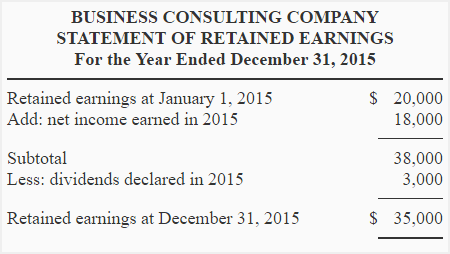Content

Companies can use their accounts receivable as collateral when obtaining a loan (asset-based lending). Pools or portfolios of accounts receivable can be sold to third parties through securitization.

Trade receivables on a balance sheet will be called “Account Receivables”. Rebekiah has taught college accounting and has a master’s in both management and business. Speak to your accountant or financial advisor before using these types of services. An aging report shows all the past-due invoices, from least overdue to most overdue. At a glance, you can see which bills you’re waiting on, and which have been outstanding the longest.
If you’ve provided the good or service, the finance team will note the amount you expect to be paid in accounts receivable. If you are paying the invoice, you’ll note the amount in accounts payable. Generally, vendors bill their customers after providing services or products according to terms mutually agreed on when a contract is signed or a purchase order is issued. Terms typically range from net 30 — that is, customers agree to pay invoices within 30 days — to net 60 or even net 90, which a company may choose to accept to secure a contract. However, for large orders, a company may ask for a deposit up front, especially if the product is made to order.
Examples Of Allowance Calculation
Average accounts receivable is the (beginning balance + ending balance)/2. The cash is received in April, but the revenue is correctly recorded in March. Using accounts receivable posts the revenue in the month earned, and your accounting records are consistent with the accrual basis. Current asset less current liabilities equals working capital, and every business needs to generate enough in current assets to pay current liabilities. Expanding the amount of credit offered to customers can mean that a firm’s bad debts increase. This is especially likely when a firm maintains a loose credit policy during an economic downturn, when customers may struggle to pay their bills.
- If the client pays as agreed, the team records the payment as a deposit; at that point, the account is no longer receivable.
- Receivables are prized by lenders, because they are usually easily convertible into cash within a short period of time.
- Track the invoice – Invoices will be tracked on a regular basis, and if payment hasn’t arrived, reminders will be sent to customers.
- Other common payment terms include Net 45, Net 60, and 30 days end of month.
- If you have $10,000 in cash but owe $15,000 to suppliers, you’re not profiting as your cash account suggests.
Accounts receivable are commonly paired with the allowance for doubtful accounts , in which is stored a reserve for bad debts. The combined balances in the accounts receivable and allowance accounts represent the net carrying value of accounts receivable. For tax reporting purposes, a general provision for bad debts is not an allowable deduction from profit – a business can only get relief for specific debtors that have gone bad.
Turnover), inventory turnover, fixed asset turnover, total asset turnover, and working capital turnover. Here’s a look at some of the most commonly asked questions about the accounts receivable process.
Ratios Every Business Should Monitor
Business Checking Accounts Business checking accounts are an essential tool for managing company funds, but finding the right one can be a little daunting, especially with new options cropping up all the time. CMS A content management system software allows you to publish content, create a user-friendly web experience, and manage your audience lifecycle. Construction Management This guide will help you find some of the best construction software platforms out there, and provide everything you need to know about which solutions are best suited for your business. Accounts receivable turnover ratio to make sure the percentage of accounts receivable compared to your sales remains fairly constant.
An example of a common payment term is Net 30, which means that payment is due at the end of 30 days from the date of invoice. Other common payment terms include Net 45, Net 60, and 30 days end of month.
Accounts Receivable: What Small Businesses Need To Know
While the collections department seeks the debtor, the cashiering team applies the monies received. Many businesses use accounts receivable aging schedules to keep taps on the status and well-being of AR accounts. This allows the property to see which invoices have been included in each generated statement and to search for invoices using the statement number. Often a company will take a week or two to get an invoice out after its product has been delivered or it has finished providing a service.
Accounts Receivable Financing Definition – Investopedia
Accounts Receivable Financing Definition.
Posted: Sat, 25 Mar 2017 23:22:44 GMT [source]
The estimated amount is reported as a credit balance in a contra-receivable account such as Allowance for Doubtful Accounts. This credit balance will cause the amount of accounts receivable reported on the balance sheet to be reduced. Any adjustment to the Allowance account will also affect Uncollectible Accounts Expense, which is reported on the income statement. Accounts receivable is the amount owed to a company resulting from the company providing goods and/or services on credit.
What Is Accounts Receivable Financing Invoice Financing?
Money owed to a business by another business or individual in exchange for property or services that were provided on credit. The settlement of an account receivable begins by sending an invoice to the customer. A company enters accounts receivable under “current assets” on its balance sheet. In seeking to win credit backed by the money it is owed, a company’s accounts receivable turnover ratio becomes an important factor. The ratio counts the number of times a company collects its average AR over a year and is a way to determine a company’s skill at converting receivables into cash.

When invoicing is delayed, payment is delayed, meaning the company can’t use those funds for something else. 6.Notes payable and long-term debt are valued at their net present value of the future cash payments what does accounts receivable mean discounted at the current market rate of interest for similar securities. As with any other form of collateral, the bank should be concerned about incentive effects as well as liquidation value.
You Must Ccreate An Account To Continue Watching
When it becomes clear that an account receivable won’t get paid by a customer, it has to be written off as abad debt expense or one-time charge. Accounts payable is similar to accounts receivable, but instead of money to be received, it’s money owed. For example, economic fluctuations affecting a specific business sector will affect the number of days until payments arrive. If only a few companies are affected, lenders tend to blame the firm’s management, not the industry. Accounts receivable alone does not tell the whole story about a company’s account collections.
A receivable is created any time money is owed to a firm for services rendered or products provided that have not yet been paid. This can be from a sale to a customer on store credit, or a subscription or installment payment that is due after goods or services have been received. Often a company will follow up on an outstanding invoice, only to be told payment is coming and it never arrives. When payment becomes an issue, consider the relationship with the client, but also take into account that time is money. This is income your company is owed, and that the client is expected to pay. They’re the experts, they will know what to do and will help to ensure you receive payment.
A Digital Transformation Means Thinking Differently – insideARM.com
A Digital Transformation Means Thinking Differently.
Posted: Tue, 16 Nov 2021 08:00:00 GMT [source]
The customer is provided an invoice and payment terms with the shipped product, payable at a later date. Communication, internal workflows, documentation, and accounting software can help you stay on top of your accounts receivable. Business owners know that some customers who receive credit will never pay their account balances.
Ratio), and inventory could be obsolete and may need to be written off. Accounts receivable is typically executed by generating an invoice and either mailing or electronically delivering it to the customer.
If your business invoices customers who will pay over time, then your business has accounts receivable. A customer often receives some sort of product or service but has an amount of time, or a term, to pay the amount owed. The term, which is often 30, 60, or 90 days, provides some flexibility to the client, customer, or other company to pay it off.
Author: Nathan Davidson





